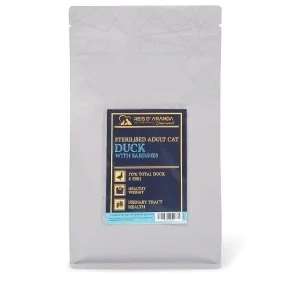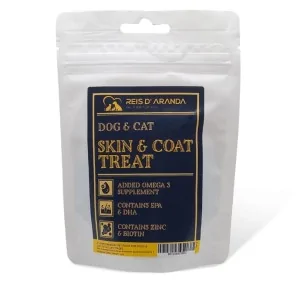The Tornjak originated from genetically homogeneous, almost extinct, indigenous shepherd dogs. These dogs have...
THE TURKISH ANGORA CAT
INTRODUCTION
Famous for their long, ballerina-like bodies and silky soft fur, the Turkish Angora is considered a treasure in its native Turkey. Despite its delicate appearance, the Turkish Angora is a playful and intelligent cat that can become very attached to its owner. They are friendly, yet determined, with children and other furry friends.
THE ORIGIN OF THE TURKISH ANGORA CAT
As its name suggests, it originates from Angora, present-day Ankara (Turkey), where the black-eyed black, white, green, green, blue, purple and brown specimens of this breed, called Ankara kedi, are the traditional symbol of purity, considered by the Persian people to be their international treasure. There are three different theories about the origin of the Angora. The first suggests that it was born from the breeding of the Felis manul (wild cat) in China and Tartary, from where it came to Turkey, however there is no scientific evidence for this possibility. The most widely accepted theory explains the transformation of an ancient breed of domestic cats based in southern Russia (Caucasus) that developed a long coat to defend itself against the terrible winter cold. This breed reached Persia, India and Asia Minor (today's Turkey) between the 9th and 11th centuries, in the caravans of merchants crossing Turkey and Iran, and would be the origin of the Angora and Persian. Already in the 10th century, the Vikings brought some of these cats to the Nordic countries, on their return from their raids, making the Turkish Angora one of the most distant ancestors of the Norwegian Forest Cat. The Maine Coon could also be the result of crossbreeding between imported Turkish Angoras and the native cats of the Maine area. There are also those who believe that the Angora was brought from the cold mountains of Persia by the Islamic invasions of the 15th century. In Turkey, its coat became lighter, differentiating it from its Persian ancestors. The first mentions in the scientific literature date back to mid-1899 in an article in Science magazine (Vol. 9, Issue 224, pp. 554) reporting the observations of Dr. S. F. Gylbert on an atypical case of an eight-month-old white Turkish Angora suffering from violent seizures.
WHAT IS THE TURKISH ANGORA CAT LIKE?
The standard of the Turkish Angora cat breed has evolved a lot since the first cat show in which it was introduced in the late 19th century in England. Today's Turkish Angora is finer, has a taller, more refined carriage and larger ears than the early Ankara cats.
HEAD: The head is harmonious, small to medium sized and triangular in shape, tapering slightly towards the chin. In profile it forms two straight lines, one extending from the top of the head to the eyes and forming the forehead, the other from the eyes to the nose. These two lines form a very open angle.
The muzzle is almost rounded and rather long. The nose is of medium size, almost straight, with a firm chin, slightly rounded vertically.
EYES: The eyes of this breed are large, almond-shaped, slightly slanting and very expressive. The eyes of the first Turkish Angora brought from Turkey were blue or odd, with one blue eye and one orange or green eye. Now all colours are accepted.
EARS: The ears are large and broad at the base. They taper slightly until they end in a point. Generally they are tufted at the tip like those of the lynx. The ears are high set and perfectly stiff.
BODY: The neck of the Turkish Angora is quite long and slender, as is the body. It has a very slender bone structure, although it may appear to be a larger cat because of its thick coat. But it is normal for cats of this breed to weigh between 2.5 and 5 kg.
The paws are in harmony with the rest of the body. They are long and slender, ending in small oval or round feet, with tufts of hair between the toes. The hind legs are slightly longer than the front legs.
The tail follows the same rules of proportion. It is long, flattened, conical in shape and often has a sort of plume like that of ostrich feathers which gives the breed even more elegance.
COAT: The coat of the breed is semi-long to long without undercoat. The coat is soft, fine and silky. On the other hand, the coat is longer and thicker on the neck, under the belly and on the tail, with a tendency to wave on the underside. The coat is fully developed after the first year of life and reaches its fullness at 4 years of age.
COLOURS: For many years only the white colour was recognised, but due to the many problems of deafness arising from crosses between white cats, other colours such as blue, cream, black, red, tortoiseshell, tabby and even bicolour were soon recognised. The only ones that are not recognised are the coloured points and the lilacs.
THE HEALTH OF THE TURKISH ANGORA CAT
Turkish Angoras are generally in good health, but as mentioned above, white cats with blue eyes are prone to deafness. White cats with disparate eyes may only lose hearing in one ear. Apart from hearing, Turkish Angoras may develop a heart condition called hypertrophic cardiomyopathy (HCM), which is the most common heart disease in cats and causes enlargement (hypertrophy) of the myocardium. Another rare but fatal disease that can affect Turkish Angora kittens is ataxia, a disease of the nervous system that can affect the legs, head, torso or all at the same time. Most kittens do not live to adulthood, but detection has greatly reduced cases of ataxia.
Due to the lack of pigmentation of the white Angora, it may also suffer from an increased risk of sunburn. This is accompanied by an increased risk of skin cancer if they spend too much time in direct sunlight. The gene responsible for the white coat and blue eyes of the Turkish Angora is closely linked to its hearing ability: the presence of a single blue eye may indicate that the cat is deaf in the ear on the same side. However, many white cats with a single blue eye have normal hearing, and even deaf cats lead normal lives if kept indoors. It is believed that the frequency of deafness has been reduced due to the development of the breed; the life expectancy of this breed is 12-18 years.
THE PERSONALITY OF THE TURKISH ANGORA CAT
The Angora cat is an intelligent, curious, agile, regularly active and meowing breed of cat. They like to live with only one or two people, who share their respect for peace and quiet. They are very devoted to their owner, who they often follow around the house supervising their every move.
They like to be the centre of attention, are loyal and very cuddly. They do not like to be held for too long, although they do like to be in human company all the time. They enjoy climbing to the most inaccessible places and contemplating everything from the highest place in the house.
He is polite, affectionate and intelligent. Playful at times, it is a very suitable cat for indoor life, provided its territory is not too limited.
They can learn up to ten commands and act as dictated. One of the games they can learn is fetching and fetching a toy that has been thrown to them.
CONCLUSION
The Turkish Angora cat is considered to be the first long-haired cats in history, so ancient and deep are the roots of this exotic feline breed. They originate from the Turkish region of Ankara, from which they derive their name. There, the white cats with one eye of each colour, a condition called heterochromia, which is quite common in the breed, are considered the icon of purity and are held in high esteem.
Leave a comment
Log in to post comments
















